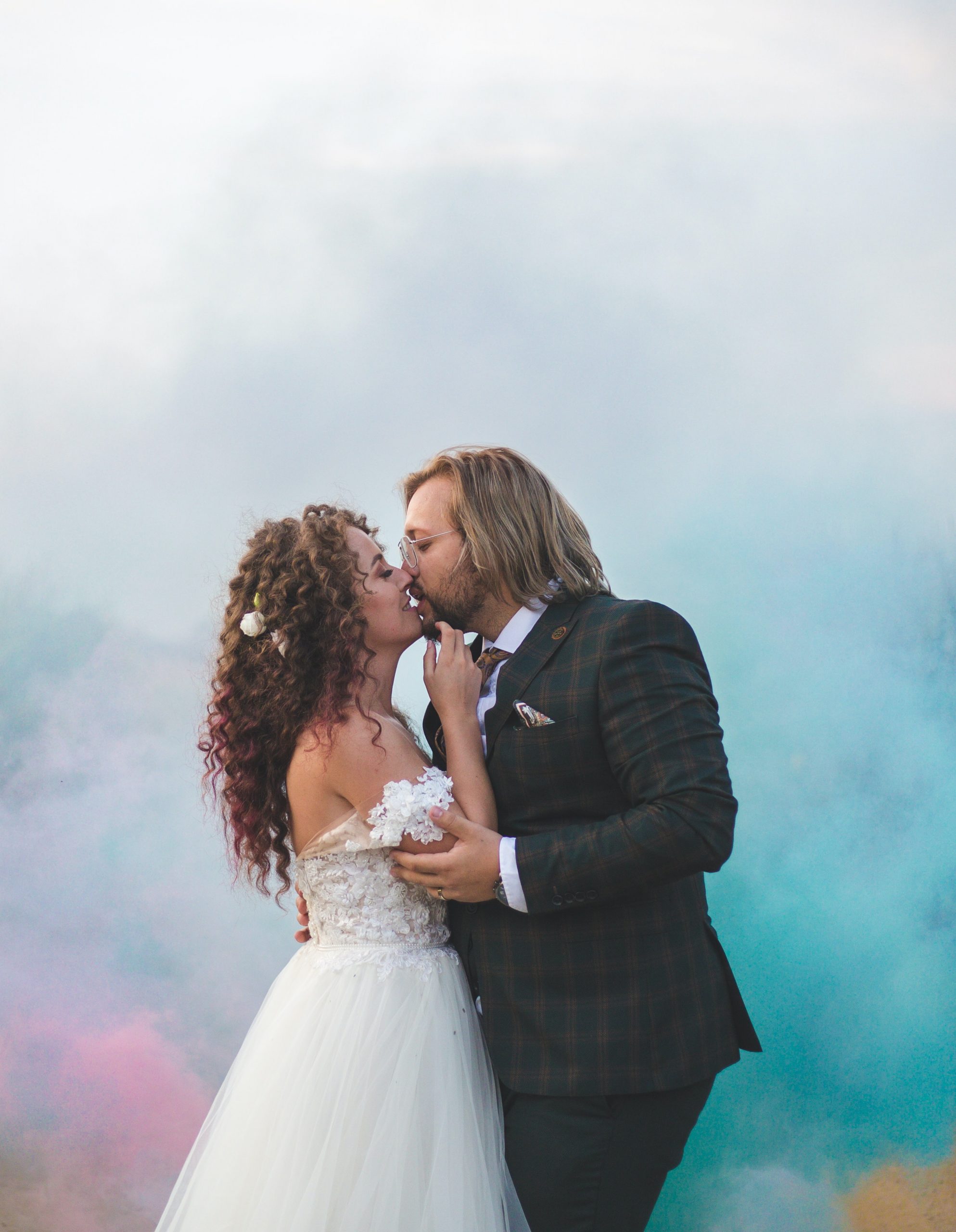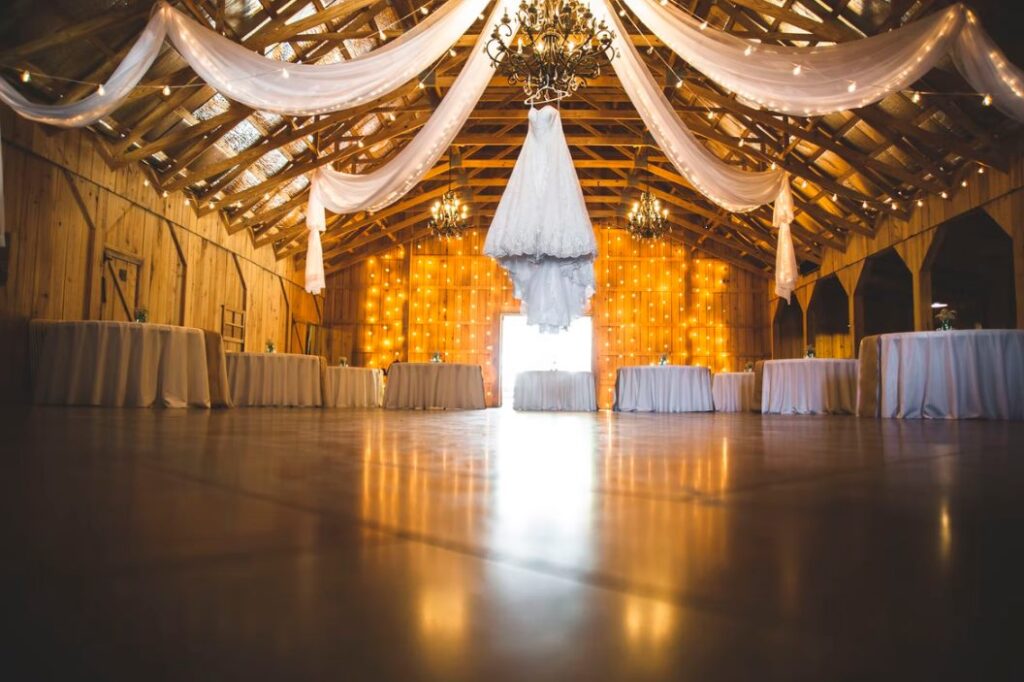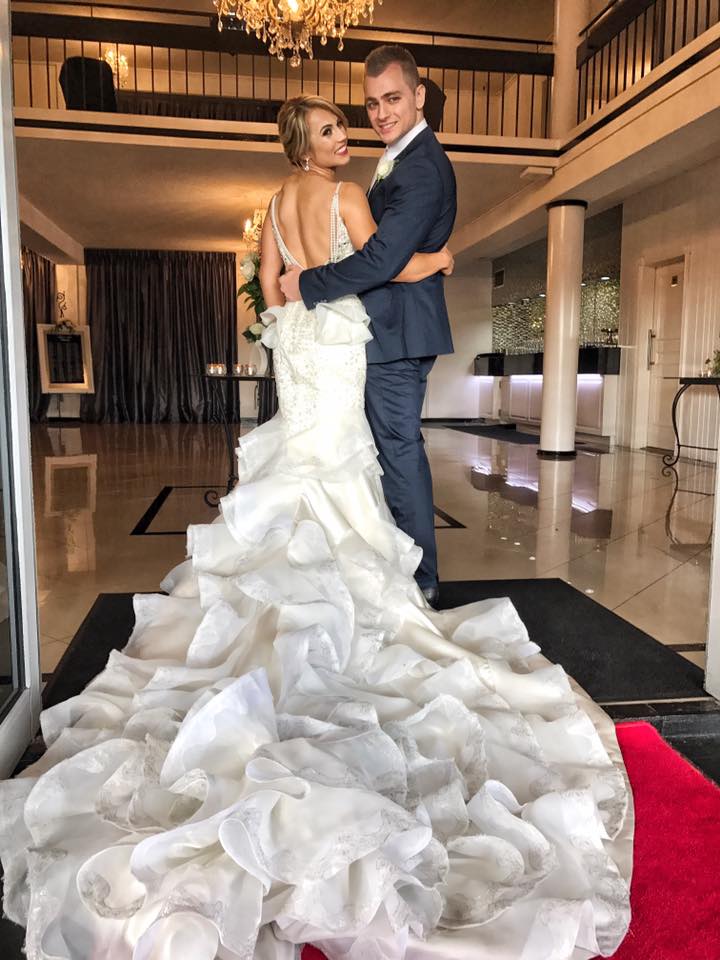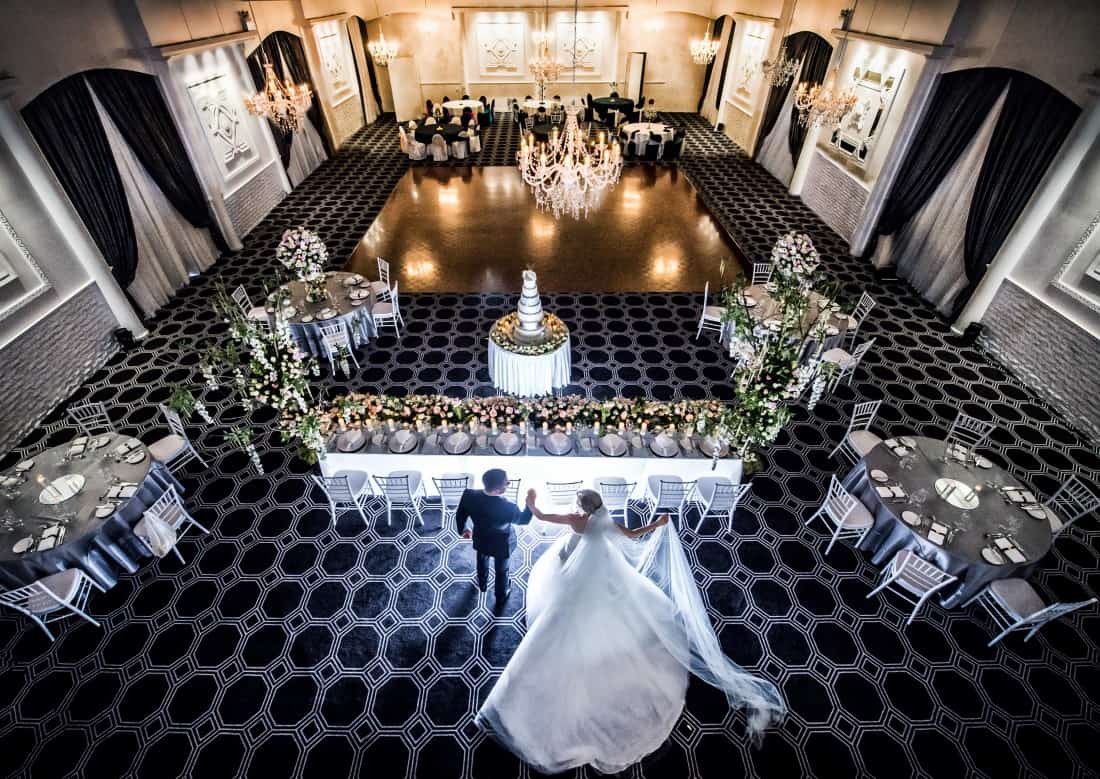Choosing a colour scheme for your wedding is an important choice that establishes the event. The colours you select will influence everything from the décor and flowers to the bridesmaids’ dresses and even the invitations. Consider your sense of style and the atmosphere you wish to create to make this choice.
Do you envision a romantic, classic wedding with soft pastels, or are you leaning towards a bold, modern look with vibrant, contrasting colours? Reflecting on your favourite colours and your wedding season can inspire; for example, warm, earthy tones are perfect for an autumn wedding, while fresh, bright hues capture the essence of a summer celebration.
Another key factor in deciding on a wedding colour scheme is the venue. The location’s natural surroundings and existing décor can guide your choices, ensuring that your colours complement the setting rather than clash with it. Additionally, consider how your chosen colours will appear in photographs, as some shades may look different under various lighting conditions.
Finally, don’t be afraid to mix and match—many modern weddings feature a palette of complementary colours rather than just one or two. By thoughtfully selecting a colour scheme that resonates with your style, venue, and season, you’ll create a cohesive and visually stunning wedding day that reflects your unique vision.
Let’s Get Straight to the Point
Choosing a wedding colour scheme is essential as it sets the tone for your entire event. Start by considering your style, the mood you want to create, and your favourite colours. Take inspiration from your venue and the season, ensuring your colours complement the setting and the time of year.
Use the colour wheel to guide harmonious combinations, and keep your wedding style or theme in mind. Balance your colour palette by selecting a primary hue complemented by a couple of secondary and accent colours.
Test your colours in real-life settings, and communicate your choices clearly with your suppliers. You’ll create a cohesive and stunning wedding day by thoughtfully selecting a colour scheme that resonates with your style, venue, and season.
Take Inspiration From Your Wedding Venue
Location is a major factor when deciding on your wedding colour scheme. If you’ve chosen a venue with a specific style or existing decor, it’s wise to complement those colours rather than clash with them. For example:
- Historic Venues often feature rich colours like burgundy, gold, or navy. Choose colours that complement these tones.
- Beach Venues: Lighter, breezier colours like seafoam green, coral, or sand can enhance the coastal vibe.
- Rustic Barns: Earthy tones, such as sage, terracotta, or warm neutrals, will enhance the natural setting.
Tip: If your venue has a neutral colour palette, you can choose any colour scheme that suits your taste.
Think About The Season
The time you get married matters a lot in determining your colour palette. Different colours evoke different feelings based on the time of year:
- Spring: Think of pastels like blush pink, lavender, or mint green. These colours reflect the freshness of the season.
- Summer: Bright, vibrant hues like coral, turquoise, or yellow are perfect for a summer wedding.
- Autumn: Rich, warm colours like maroon, burnt orange, or deep greens can enhance the cosy feeling of a fall wedding.
- Winter: Cool tones like icy blues, silvers, or deep jewel tones like emerald or navy are ideal for a winter wedding.
Key Point: Don’t feel constrained by the season; if you love a particular colour, find a way to incorporate it regardless of the time of year.
Reflect Your Style In Your Wedding Colour Scheme
Your style should shine through in your wedding colours. Consider the colours you are naturally drawn to in your daily life:
- Home Decor: If your home features a lot of soft greys, blues, or neutrals, you should incorporate these into your wedding.
- Wardrobe Choices: Do you prefer bold colours or soft, muted tones? Your wardrobe can offer clues to your preferred colour scheme.
Note: Your wedding colours should feel like an extension of your and your partner’s personalities.
Set The Mood With Your Wedding Colour Scheme
Your colour choices can enhance the mood you want to create at your wedding. Consider the following:
- Romantic: Soft pinks, creams, and blush tones create a dreamy, romantic atmosphere.
- Elegant: Black, gold, and deep purples or burgundies add a touch of luxury and sophistication.
- Fun and Playful: Bright, bold colours like fuchsia, turquoise, or lime green can make your wedding feel energetic and lively.
Reminder: Consider how you want your guests to feel when they enter your wedding space, and choose colours that evoke that emotion.
Use The Colour Wheel For Guidance
Refer to the colour wheel if you need help deciding which colours to choose. Some classic combinations include:
- On the colour wheel, complementary colours are those opposite, such as blue and orange, which create a vibrant contrast.
- Analogous Colours: These sit next to each other, like blue, teal, and green, offering a more harmonious and calming effect.
Practical Tip: Choose a primary colour and add one or two complementary or analogous colours to build your palette.
Keep The Wedding Style In Mind
Your wedding style or theme can also guide your colour choices. For instance:
- Vintage Weddings: Soft, muted colours like dusty rose, sage, or champagne work well.
- Modern Weddings: Bold, monochromatic colour schemes with pops of metallics like silver or gold can create a sleek, contemporary look.
- Bohemian Weddings: Earthy tones with vibrant colours like mustard, terracotta, and emerald green are ideal.
Advice: To ensure a cohesive look, let your wedding style lead your colour decisions.

Prioritise Your Favourite Colours For Your Wedding
It’s your wedding, so remember to include your favourite colours. If you’ve always loved a particular shade, find a way to incorporate it into your big day. For example:
- Favourite Flowers: If you adore sunflowers, yellow might be your primary colour, paired with greens and browns.
- Beloved Outfits: If you often wear a specific colour, consider using that as a key part of your wedding palette.
Tip: Ensure that the colours you choose are something you’ll still love when you look back on your wedding photos years from now.
Balance Your Colour Scheme
While it’s tempting to use all your favourite colours, it’s important to balance your scheme to avoid it becoming overwhelming:
- Primary Colour: This should be the dominant colour used throughout your wedding.
- Secondary Colours: Choose one or two colours that complement the primary colour.
- Accent Colour: This colour should pop and add contrast but is used sparingly.
Guideline: Stick to three to five colours to keep your palette cohesive and visually appealing.
Test Your Colours In Real-Life
Before finalising your choices, test them:
- Fabric Swatches: Collect swatches of your colours in different materials to see how they look together.
- Flowers: Work with your florist to create a sample bouquet or centrepiece in your chosen colours.
- Venue: Visit your venue with your colour samples to ensure they complement the space.
Important: Colours can look different in varying lights, so testing them in the venue where they’ll be seen is crucial.
Communicate With Your Suppliers
Once you’ve decided on your colours, communicate them clearly to your suppliers:
- Florist: Provide a detailed description and swatches to ensure your flowers match your vision.
- Caterer: Discuss how your colours can be reflected in the table settings, linens, and even the food presentation.
- Dressmaker: If you’re incorporating your colours into attire, ensure your dressmaker has the exact shades.
Reminder: Clear communication with your suppliers keeps everyone in agreement and creates a cohesive look.
Choosing your wedding colour scheme is a crucial part of the planning process. You can create a colour palette that perfectly suits your wedding by taking inspiration from your venue, considering the season, reflecting on your style, and setting the mood.
Use the colour wheel for guidance, balance your colour scheme, and remember to test your colours in real life. Most importantly, communicate your choices clearly with your suppliers to ensure a beautiful, cohesive wedding day.
Your wedding colour scheme should reflect your style, complement your venue, and set the tone for your special day. Feel free to incorporate your favourite colours, but ensure they work together to create a balanced and harmonious look.



